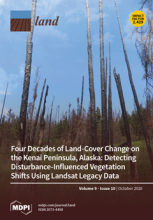Land Library
Bienvenido a la biblioteca de Land Portal. Explora nuestra amplia colección de recursos de acceso abierto (más de 74.000), que incluye informes, artículos de revistas científicas, trabajos de investigación, publicaciones revisadas por pares, documentos jurídicos, vídeos y mucho más.
/ library resources
Showing items 1 through 9 of 35.Land degradation has become one of the major global environmental problems threatening human well-being. Whether degraded land can be restored has a profound effect on the achievement of the 2030 UN Sustainable Development Goals.
This study investigates the main threats related to environmental degradation that affect Amazonian Indigenous Lands (ILs). Through a cluster analysis, we group ILs according to the set of common environmental threats that occur within and outside their limits.
Cattle grazing and fire are common types of management on natural ecosystems, generating several threats to the conservation of native vegetation (e.g., changes in species richness, cover, and abundance, mainly of bovine-palatable species).
Land degradation, especially soil erosion, is a societal issue that affects vineyards worldwide, but there are no current investigations that inform specifically about soil erosion rates in Chinese vineyards.
Alpine pastures and meadows are agroecosystems of biological, cultural-historical, and economic importance that are undergoing profound imbalances and which are in a rapid decline due to changes in management and/or abandonment.
Agricultural intensification is considered essential for meeting growing demand for food and biomass for energy purposes. Intensifying grasslands is under-represented, although it is a promising option given their large land area and relatively low management levels.
Development has fragmented urban nature, and target sites for conservation strategies need to be those that have long maintained their original land cover in a clustered area.
Achieving change to address soil erosion has been a global yet elusive goal for decades. Efforts to implement effective solutions have often fallen short due to a lack of sustained, context-appropriate and multi-disciplinary engagement with the problem.
A framework was developed to elucidate (1) the drivers of land degradation, (2) pressures, (3) local impacts and vulnerabilities and (4) adaptation strategies.




